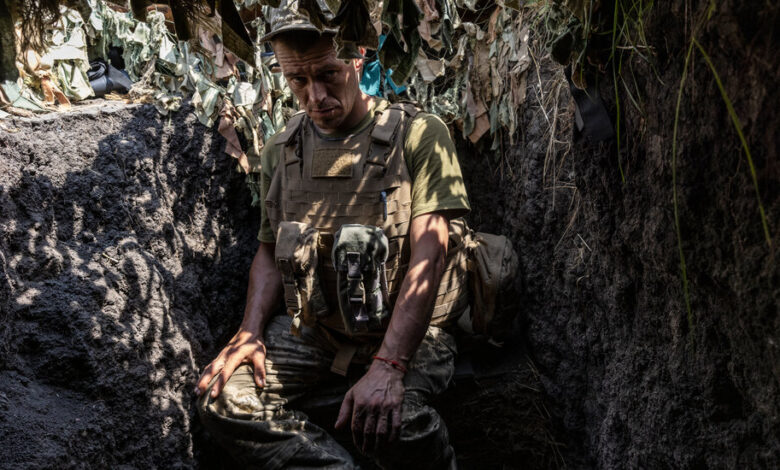Zelensky is under pressure over when and how to launch a long-anticipated counteroffensive.

As the bloody artillery battle in Ukraine’s east settles into a stalemate, the war appears now to be a waiting game for a long-promised Ukrainian counteroffensive.
The timing for any move to break the deadlock has emerged as a pivotal strategic decision for Ukraine’s government. Both sides are preparing for a protracted war, but Ukraine has greater incentive to try to avoid it by undertaking risky maneuvers as early as this fall — before the rainy season closes the window on possible offensives over open fields.
From the Ukrainian perspective, the mostly static trench fighting cannot go on indefinitely. Leaving Russia in control of much of the southern coastline would cripple Ukraine’s economy, already cratering from the war and propped up by Western aid.
The initial target of any counterattack is widely assumed to be Russian positions on the western bank of the Dnipro River. Move too soon, though, and the Ukrainian army may prove unready and insufficiently armed to ensure victory, military analysts say. Wait too long, and political backing in Europe may waver as energy prices soar.
Political pressure is mounting for President Volodymyr Zelensky of Ukraine to make a move even as it remains unclear whether his military has amassed the necessary weaponry and manpower.
“The very difficult state of our economy, the constant risks of air and missile attacks and the general fatigue of the population from the difficulties of war will work against Ukraine” over time, Andriy Zagorodnyuk, a former minister of defense, wrote in the Ukrainska Pravda newspaper. He said the military should be prepared to advance, rather than defend.
“It makes no sense to drag out the war for years and compete to see who will run out of resources first,” he wrote.
The Ukrainians pivoted to a new strategy of so-called “deep war” — hitting targets far behind the front — after months of grim artillery duels and street fighting in the eastern region of Luhansk, which ultimately fell under Russian control by early July.
Using long-range, precision guided rockets provided by the United States, the Ukrainian military has been softening up Russian positions behind the front line while also striking the Russian-occupied Crimea Peninsula.
The Ukrainian government has said that, since late June, it has hit at least 154 ammunition depots, 91 bases for weapons storage, four barracks housing soldiers, four fuel depots and eight command posts. Those claims could not be independently verified.
But Ukraine has for months been telegraphing plans for the major battle in the south— with the types of weapons it has requested from Western allies and the strategies it pursues on the battlefield offering clues to its approach.
A recent U.S. military assistance package tellingly included mine-clearing attachments for armored vehicles that would be used in an advance, suggesting preparations for attacks on Russian lines.
But more time would bring more Western weaponry: Despite the arrival of artillery systems from NATO members, Ukraine’s arsenal is still largely made up of legacy Soviet arms.
At home in Ukraine, Mr. Zelensky has broad support for continuing the war. An opinion poll by the Razumkov Center, a policy research organization in Kyiv, released on Monday showed 92 percent of Ukrainians are confident in a military victory over the Russian army.
But Russian plans to stage referendums in occupied territory could lead to a claim of annexation as early as next month, putting additional time pressure on Mr. Zelensky to launch an offensive.
